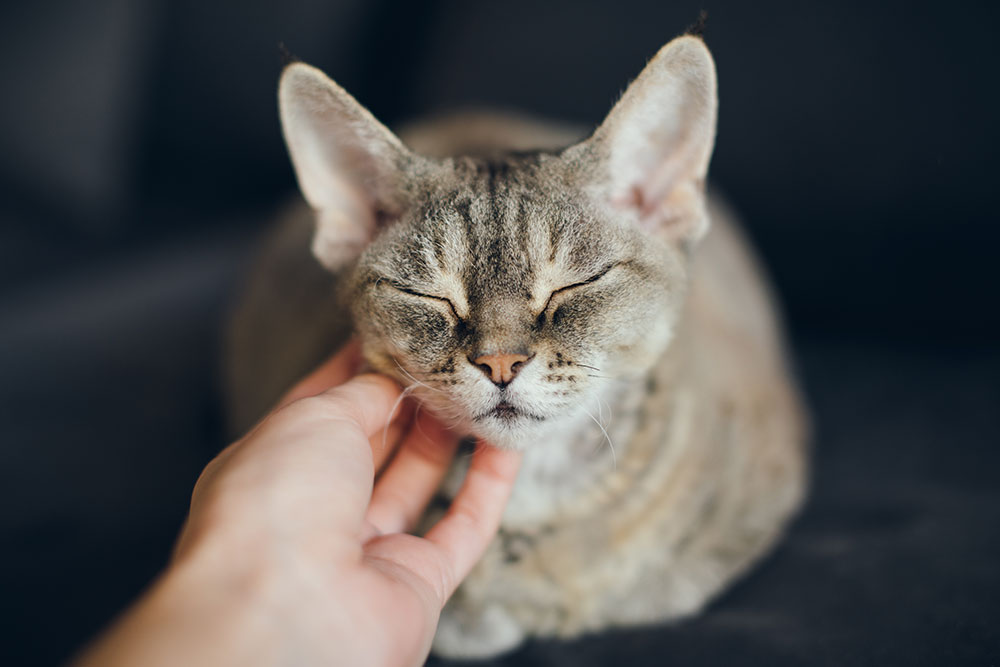Reading the Signs: Stress and Anxiety in Pets
Excessive grooming, hiding, or destructive behavior often signal stress or anxiety in pets. These emotional challenges can stem from fear, pain, or environmental changes, and they deserve just as much attention as physical health issues.
At Boca Midtowne Animal Hospital, our Fear Free certified team understands that emotional well-being is essential to quality veterinary care. As an AAHA-accredited practice, we combine advanced medicine with gentle, low-stress techniques to help anxious pets feel safe, supported, and understood.
Why Pet Anxiety Matters
Anxiety in pets is not disobedience, it is a signal that something feels wrong. Dogs and cats experience stress through both emotional and physical pathways. Chronic anxiety weakens the immune system, disrupts sleep, and can lead to destructive or self-harming behaviors. Left untreated, stress becomes a cycle that erodes the bond between pets and their families.
Understanding what triggers anxiety and addressing it early helps restore confidence and peace for both pet and owner.
Common Causes of Anxiety
Environmental Triggers
Loud noises like fireworks, construction, or storms are common sources of fear. Even subtle changes, such as a new piece of furniture, home renovations, or altered routines, can unsettle sensitive pets.
Social Stressors
New family members, other pets, or time apart from their favorite humans can cause anxiety. Pets mirror their environment, and emotional tension in the household often appears in their behavior.
Medical Conditions
Physical discomfort or pain from arthritis, dental disease, or other illnesses frequently presents as irritability or withdrawal. In older pets, cognitive dysfunction can cause confusion and pacing that mimic anxiety. Because medical and emotional issues often overlap, a thorough veterinary exam is essential before beginning behavior modification.
Recognizing the Signs
In Dogs
Dogs communicate stress through panting, trembling, pacing, drooling, or repetitive behaviors like spinning and licking. Excessive barking, whining, or destructive chewing may indicate distress. Learning to interpret canine body language, such as yawning, turning away, or a tucked tail, helps you respond before anxiety escalates.
In Cats
Cats tend to hide their fear. Signs include overgrooming, aggression, and hiding for long periods. Changes in litter box habits are a red flag. Many cat behavior issues arise from anxiety, not stubbornness. Watch for flattened ears, dilated pupils, and tense postures. The feline grimace scale can reveal pain-related stress that influences behavior.
Specific Triggers to Watch For
Noise Sensitivity
Noise aversion is among the most common anxiety disorders in pets. Thunderstorms, fireworks, or vacuum cleaners can provoke panic. Desensitization and counter-conditioning, paired with calm spaces and positive reinforcement, help reduce fear over time. Consistency and early training are key- starting before major holidays or storm seasons can make a big difference in your pet’s long-term comfort. Even simple strategies like white noise machines or sound-masking playlists can help maintain calm during noisy events.
Social and Routine Changes
Separation anxiety in dogs can lead to barking, destruction, or accidents when left alone. For cats, stress from environmental changes often results in hiding or refusing food. Gradual transitions, predictable routines, and enriched environments help pets adjust. Small steps- like short practice departures or setting up comforting scent items- help ease anxiety when routines shift.
Inter-cat tension or resource guarding may stem from fear, not dominance. Understanding these motivations allows for compassionate and effective solutions. Providing separate feeding stations, rest areas, and structured interactions prevents conflict and builds a calmer household dynamic.
Helping Pets Overcome Anxiety
Positive Reinforcement Training
Reward-based training builds confidence and strengthens trust. Positive reinforcement methods teach pets that good things happen when they stay calm. The engage-disengage game helps redirect focus from stress triggers to the handler. By rewarding calm behavior rather than reacting to fear, pets learn to manage emotions more effectively.
Cooperative care training for dogs and cats transforms medical handling into positive experiences. Punishment increases fear and damages trust. Building these skills at home prepares pets for veterinary visits, grooming, and other stressful scenarios- creating a foundation of cooperation rather than resistance.
Enrichment and Environmental Support
Boredom amplifies anxiety. Cat enrichment toys and vertical spaces allow cats to feel secure and in control. Following indoor cat environment tips helps reduce stress. Rotation of toys and play areas keeps cats mentally stimulated and physically active, reducing unwanted behaviors.
Dogs benefit from enrichment activities and sniffari walks that engage their senses and provide healthy outlets for energy. These activities strengthen confidence and lower stress hormones, especially in anxious or high-energy pets.
Medical and Calming Support
Some pets need additional help. Pheromone therapy such as Adaptil or Feliway, supplements, or prescribed medications can ease anxiety. Our veterinary wellness care includes screenings to identify pain or illness that may contribute to stress. Chronic discomfort or hidden conditions can mimic or worsen anxiety, so addressing medical factors is just as important as behavior training. For many pets, a combined plan of medical management, behavior modification, and environmental support provides the most lasting relief.
A Calm-At-Home Plan You Can Start Today
- Create a safe retreat with a comfortable bed, water, and a chew or food puzzle. Use this space during storms or visitors.
- Add white noise or soft music to buffer outdoor sounds. Close curtains during fireworks or heavy storms.
- Use predictable routines for meals, walks, and play. Consistency reduces uncertainty.
- Practice short, positive separations. Start with a few minutes, return calmly, and build duration gradually.
- Offer daily mental work. Food puzzles, foraging mats, and scent games reduce restlessness and give a sense of control.
- Rehearse vet visit skills. Teach chin rest, standing still, and accepting gentle touch. Pair with treats and praise.
- Talk to us about pre-visit medications or pheromones if travel and appointments are stressful.
How Your Veterinarian Can Help
Reducing Fear at the Vet
At Boca Midtowne Animal Hospital, we take every measure to make visits calm and comfortable. Our Fear Free certification means each team member is trained to minimize fear through gentle handling, treats, and positive reinforcement. Owners can help by scheduling quiet appointment times, bringing familiar bedding or toys, and arranging happy visits where pets receive praise and snacks in the clinic environment. Pre-visit medications and pheromone sprays can further reduce travel stress.
Diagnosing Underlying Problems
Veterinary assessment may include a physical exam, blood work, and behavior history to distinguish emotional distress from pain or illness. Our advanced diagnostic services such as digital cytology, ultrasound, and radiography allow precise evaluation and targeted treatment. For pets in crisis, our urgent care team can stabilize patients during open hours and coordinate transfer when overnight monitoring is necessary.

Myths About Pet Anxiety
They will grow out of it.
Without intervention, anxiety usually worsens with time.
Punishment works.
Punishment intensifies fear and teaches pets to suppress, not overcome, their anxiety.
Medication is a last resort.
For many pets, medication is an essential tool that enables successful behavior therapy and improves quality of life.
Frequently Asked Questions
When does anxiety need veterinary care?
Seek help if anxiety interferes with eating, sleeping, or social interaction, or if self-injury or destructive behavior occurs.
What is the first step if I suspect anxiety?
Record triggers, keep routines consistent, and schedule a veterinary evaluation to rule out medical causes.
Can pets recover fully?
With early and consistent support, most pets significantly improve. Anxiety rarely disappears on its own, but it can be managed successfully.
Restoring Calm and Confidence
Recognizing anxiety is the first step toward helping pets thrive emotionally and physically. With guidance, patience, and professional support, even the most anxious pets can regain balance.
At Boca Midtowne Animal Hospital, our experienced team offers comprehensive anxiety assessments, behavior consultations, and urgent care for pets in distress. Call us or request an appointment to start your pet’s journey toward calm, confidence, and better health.








Leave A Comment